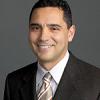News
Apr 10 2013 | Inside Stanford Medicine
Combining neuroscience and chemical engineering, researchers at Stanford University have developed a process that renders a mouse brain transparent. The postmortem brain remains whole — not sliced or sectioned in any way — with its three-dimensional complexity of fine wiring and molecular...
Apr 8 2013 | Inside Stanford Medicine
Grim images of gun incidents spanning from Newtown, Conn., to Los Angeles have filled news reports of late, presenting a challenge for parents whose children are exposed to these events through the media — whether by television, newspaper or the Internet. And with discussions in the Senate to...
Apr 2 2013 | Stanford Report
The Brain Research through Advancing Innovative Neurotechnologies (BRAIN) project, which calls for initial federal funding of $100 million, will make use of several innovative technologies invented by Stanford scientists.
Mar 28 2013 | Stanford Report
Pursuing the misunderstood Humboldt squid, Hopkins Marine Station's William Gilly has strapped video cameras and electronic sensors to the animals, exhaustively analyzed their habitats, tracked them with sonar and raised their eggs.
Mar 14 2013 | Stanford Report
Engineers at Stanford have developed a prototype single-fiber endoscope that improves the resolution of these much-sought-after instruments fourfold over existing designs. The advance could lead to an era of needle-thin, minimally invasive endoscopes able to view features out of reach of today's...
Mar 7 2013 | Stanford Report
Traditional methods of fMRI analysis systematically skew which regions of the brain appear to be activating, potentially invalidating hundreds of papers that use the technique.
Feb 19 2013 | Stanford Report
Stanford scientists have developed a system for observing real-time brain activity in a live mouse. The device could prove useful in studying new treatments for neurodegenerative diseases, such as Alzheimer's.
Feb 13 2013 | Inside Stanford Medicine
Healthy menopausal women carrying a well-known genetic risk factor for Alzheimer’s disease showed measurable signs of accelerated biological aging, a new study has found.
Nov 14 2010 | NeuWrite West Blog
The first in a two-part series about neuroscience and the law in the blog NeuWrite West.
Oct 25 2010 | NeuWrite West Blog
The second in a two-part series about neuroscience and the law in the blog NeuWrite West.












